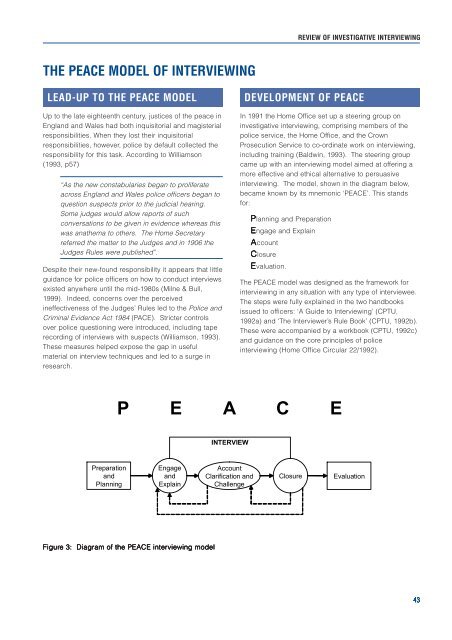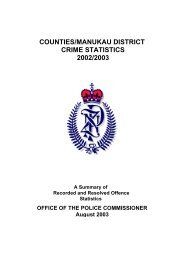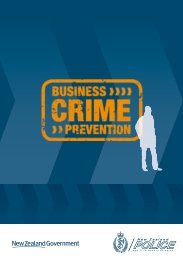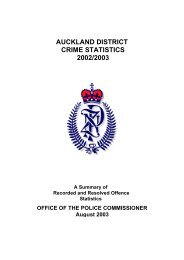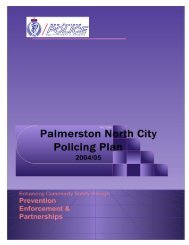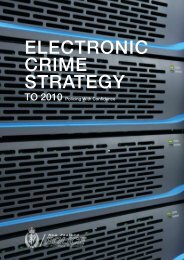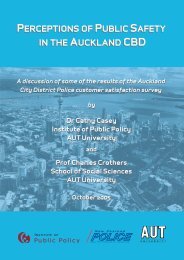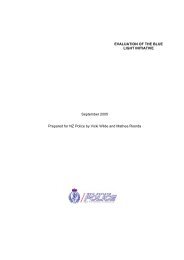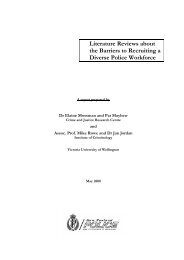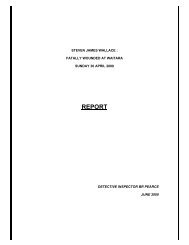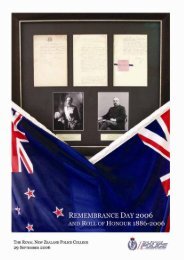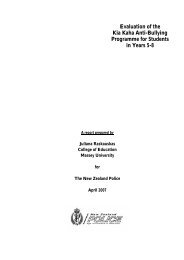Investigative interviewing: the literature - New Zealand Police
Investigative interviewing: the literature - New Zealand Police
Investigative interviewing: the literature - New Zealand Police
Create successful ePaper yourself
Turn your PDF publications into a flip-book with our unique Google optimized e-Paper software.
REVIEW OF INVESTIGATIVE INTERVIEWING<br />
THE PEACE MODEL OF INTERVIEWING<br />
LEAD-UP TO THE PEACE MODEL<br />
Up to <strong>the</strong> late eighteenth century, justices of <strong>the</strong> peace in<br />
England and Wales had both inquisitorial and magisterial<br />
responsibilities. When <strong>the</strong>y lost <strong>the</strong>ir inquisitorial<br />
responsibilities, however, police by default collected <strong>the</strong><br />
responsibility for this task. According to Williamson<br />
(1993, p57)<br />
“As <strong>the</strong> new constabularies began to proliferate<br />
across England and Wales police officers began to<br />
question suspects prior to <strong>the</strong> judicial hearing.<br />
Some judges would allow reports of such<br />
conversations to be given in evidence whereas this<br />
was ana<strong>the</strong>ma to o<strong>the</strong>rs. The Home Secretary<br />
referred <strong>the</strong> matter to <strong>the</strong> Judges and in 1906 <strong>the</strong><br />
Judges Rules were published”.<br />
Despite <strong>the</strong>ir new-found responsibility it appears that little<br />
guidance for police officers on how to conduct interviews<br />
existed anywhere until <strong>the</strong> mid-1980s (Milne & Bull,<br />
1999). Indeed, concerns over <strong>the</strong> perceived<br />
ineffectiveness of <strong>the</strong> Judges’ Rules led to <strong>the</strong> <strong>Police</strong> and<br />
Criminal Evidence Act 1984 (PACE). Stricter controls<br />
over police questioning were introduced, including tape<br />
recording of interviews with suspects (Williamson, 1993).<br />
These measures helped expose <strong>the</strong> gap in useful<br />
material on interview techniques and led to a surge in<br />
research.<br />
DEVELOPMENT OF PEACE<br />
In 1991 <strong>the</strong> Home Office set up a steering group on<br />
investigative <strong>interviewing</strong>, comprising members of <strong>the</strong><br />
police service, <strong>the</strong> Home Office, and <strong>the</strong> Crown<br />
Prosecution Service to co-ordinate work on <strong>interviewing</strong>,<br />
including training (Baldwin, 1993). The steering group<br />
came up with an <strong>interviewing</strong> model aimed at offering a<br />
more effective and ethical alternative to persuasive<br />
<strong>interviewing</strong>. The model, shown in <strong>the</strong> diagram below,<br />
became known by its mnemonic ‘PEACE’. This stands<br />
for:<br />
Planning and Preparation<br />
Engage and Explain<br />
Account<br />
Closure<br />
Evaluation.<br />
The PEACE model was designed as <strong>the</strong> framework for<br />
<strong>interviewing</strong> in any situation with any type of interviewee.<br />
The steps were fully explained in <strong>the</strong> two handbooks<br />
issued to officers: ‘A Guide to Interviewing’ (CPTU,<br />
1992a) and ‘The Interviewer’s Rule Book’ (CPTU, 1992b).<br />
These were accompanied by a workbook (CPTU, 1992c)<br />
and guidance on <strong>the</strong> core principles of police<br />
<strong>interviewing</strong> (Home Office Circular 22/1992).<br />
P E A C E<br />
INTERVIEW<br />
Preparation<br />
and<br />
Planning<br />
Engage<br />
and<br />
Explain<br />
Account<br />
Clarification and<br />
Challenge<br />
Closure<br />
Evaluation<br />
Figure 3: Diagram of <strong>the</strong> PEACE <strong>interviewing</strong> model<br />
43


